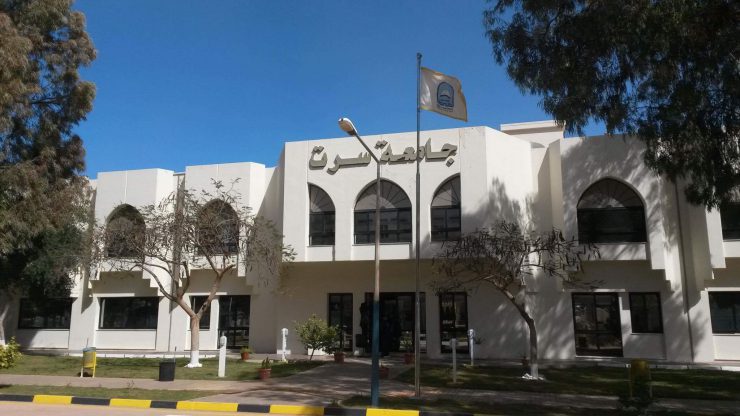ISIS attacked an army security checkpoint 200 kilometers from the southern city of Sirte on 23 August, according to government officials. The terrorist group beheaded 11 soldiers and blew up the checkpoint building affiliated with the Council of Representatives in Al-Fokahaa, surprising the Government of National Accord (GNA), whose forces fought a six-month-long battle to regain control of Sirte in 2016.
“The soldiers came from western Libya and had no knowledge of the area,” said Mohamed Sharif, Head of the Investigations and Arrest Department in Waddan. “The information confirms that they were not prepared for such an attack and did not have sufficient arms.”
Isis spottings
An official in Sirte’s Municipal Council confirmed that ISIS fighters have been spotted in many areas in the south, including some valleys and caves where ISIS is believed to have some camps.
The source, who spoke under conditions of anonymity, said these areas are located 100-150 km from Sirte, and that security forces had not observed any ISIS activity in the city after the GNA-led Bunyan Al-Marsous Operation ended in 2016.
Since then, however, ISIS fighters have entered the desert and sneaked into those areas every now and then to establish temporary checkpoints or carry out maneuvers, which the security apparatuses and local population have observed. On 15 August, some ISIS maneuvers were spotted in Um Khunfus, according to local sources who said that ISIS fighters entered and looted some buildings.
Weakened ISIS
Mohamed Ghasari, spokesperson of the Bunyan Marsous Operation and Ministry of Defense in the GNA, said: “GNA’s forces will fight ISIS wherever it is. The cooperation and coordination with the international support forces, which took part in the military operations against ISIS in Sirte, continue to fight ISIS and monitor its moves since liberating the city.”
Ghasri insisted that a revival of the terrorist group was unlikely: “ISIS has no social support and will not be able to regroup in a way that threatens the Libyan national security.” However, he did not disclose the whereabouts of ISIS remnants, “to protect the privacy of the military forces which target it. If we disclosed ISIS’ whereabouts, it will make them change their plans.”
Ghasri’s belief that ISIS cannot regroup is based on the fact that it was hit hard in Sirte during the Bunyan Al-Marsous operation which killed at least 2,500 of its members, indicating that ISIS remnants might carry out terrorist operations, such as explosions or other attacks but will unlikely to regroup, he said.
Aerial operations
At the end of this past July, local media in Sirte reported that an ISIS group was shelled but no Libyan entity claimed responsibility for the strike.
Mohamed Qanunu, spokesperson of GNA’s Aerial Operation Room, said: “We condemn reporting the news of shelling ISIS without mentioning the sources, as it is unprofessional and was reported without referring to the relevant authorities.” However, Qanunu stressed that the Libyan Air Force regularly targets ISIS and monitors its moves in Sirte, Al-Khums, east of Bani Waleed, North of Jafra in the Valleys Area, and in the desert, without citing specific operations.
“The reconnaissance planes monitor all the moves of ISIS remnants and targets them when necessary, in coordination with the forces tasked with protecting Sirte and the Joint Security Room in Misrata,” says Qanunu, stressing that the GNA Aerial Operation Room coordinates with international support forces and the Central Operation Room, whose missions have continued even after taking over Sirte.
Qanunu said that ISIS was well-trained and professional. It directs its fighters and trains them based on the information collected from people and official statements. For this reason military officials, he stressed, are very careful when giving statements, as they are aware that the information they provide, can be exploited by ISIS members.
He concurred with Ghasri and did not expect that ISIS would be able to regain control over any area in Libya. He added: “After liberating the city, we followed ISIS remnants and its sleeping cells. We knew that the battle was far from over.”
Negligence and division
A senior military source in the GNA’s armed forces said recent ISIS movements and its ability to regroup are the result of “the negligence of some citizens who cooperate with ISIS and some undisciplined security entities in Sirte and its suburbs.”
“The political arguments and disagreements and the public opinion trends are things which ISIS uses to regroup,” the military source said, stressing the importance of reaching a political solution in Libya to cut the road in front of such groups that “exploit the situation in the country to build itself from scratch.”
At the same time, the source indicated that the military operations carried out by GNA forces were shrouded in secrecy due to the fragile situation and the dangers associated with exposing such information.
Al-Qaeda is more dangerous
Ahmed Najm, a political analyst, believed that ISIS was in its final stages of collapse, although he said that the true danger might come from other Islamist groups like Al-Qaeda.
“Al-Qaeda in Libya is stronger than ISIS,” he said. He stressed that defeating extremist armed groups needs great efforts and political agreement to identify and classify terrorist groups that have supporters in many Libyan areas, work under different political names, and have influence in the political arms and the state apparatuses and entities.
Despite the lack of information about ISIS’ fate and the number of its fighters, observers agree that the hits it received over the last two years have destroyed its forces significantly.

